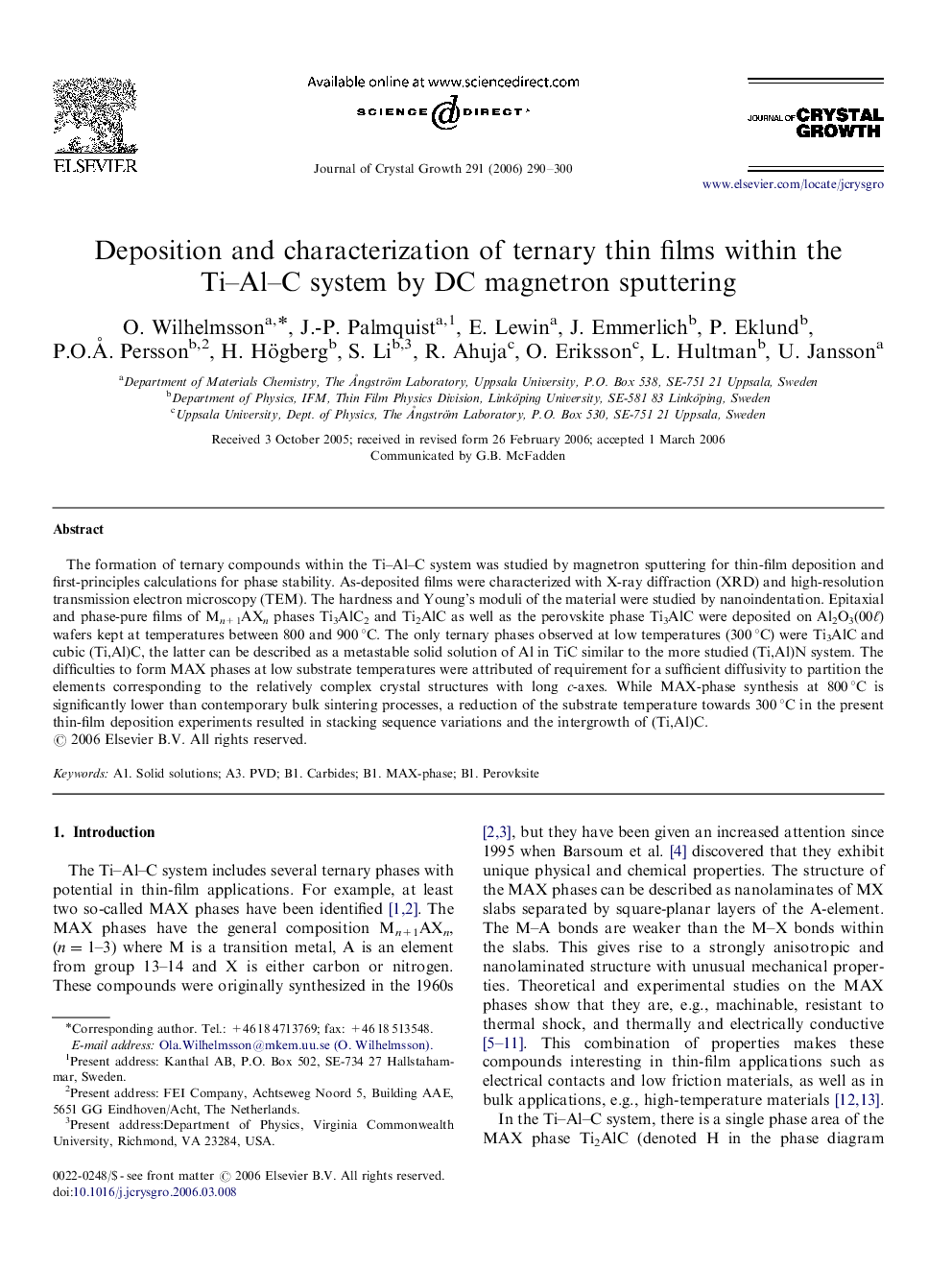| Article ID | Journal | Published Year | Pages | File Type |
|---|---|---|---|---|
| 1796090 | Journal of Crystal Growth | 2006 | 11 Pages |
The formation of ternary compounds within the Ti–Al–C system was studied by magnetron sputtering for thin-film deposition and first-principles calculations for phase stability. As-deposited films were characterized with X-ray diffraction (XRD) and high-resolution transmission electron microscopy (TEM). The hardness and Young's moduli of the material were studied by nanoindentation. Epitaxial and phase-pure films of Mn+1AXn phases Ti3AlC2 and Ti2AlC as well as the perovskite phase Ti3AlC were deposited on Al2O3(00ℓ) wafers kept at temperatures between 800 and 900 °C. The only ternary phases observed at low temperatures (300 °C) were Ti3AlC and cubic (Ti,Al)C, the latter can be described as a metastable solid solution of Al in TiC similar to the more studied (Ti,Al)N system. The difficulties to form MAX phases at low substrate temperatures were attributed of requirement for a sufficient diffusivity to partition the elements corresponding to the relatively complex crystal structures with long c-axes. While MAX-phase synthesis at 800 °C is significantly lower than contemporary bulk sintering processes, a reduction of the substrate temperature towards 300 °C in the present thin-film deposition experiments resulted in stacking sequence variations and the intergrowth of (Ti,Al)C.
